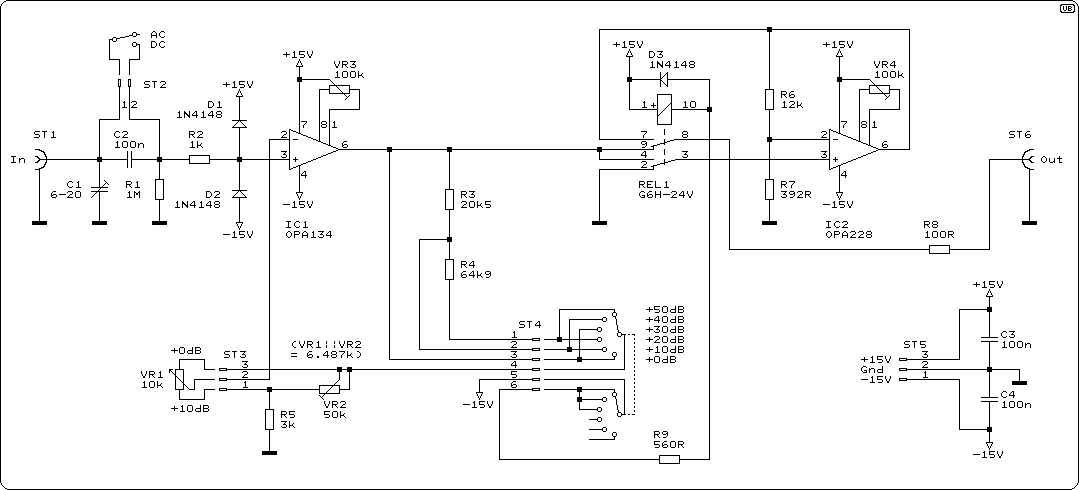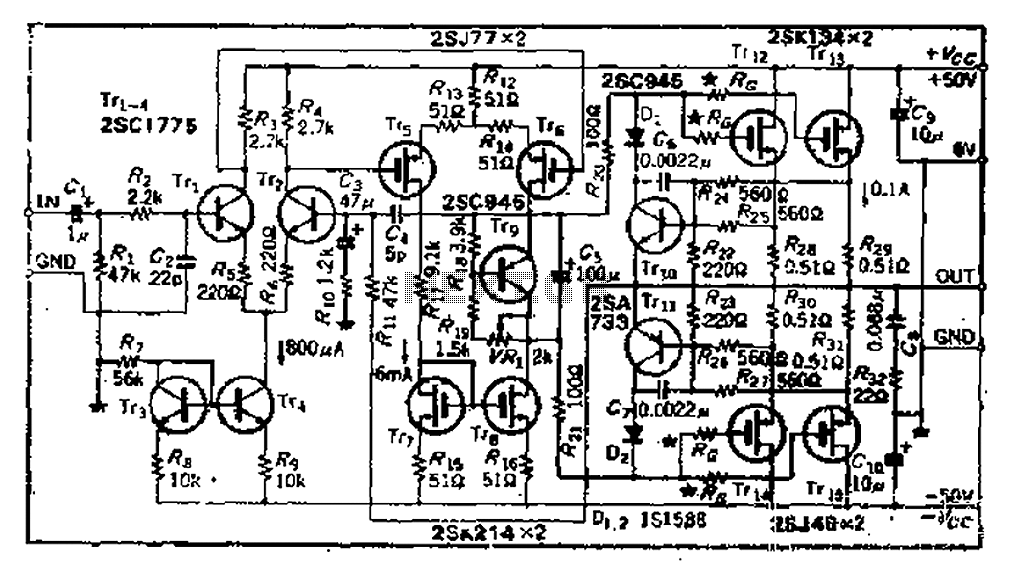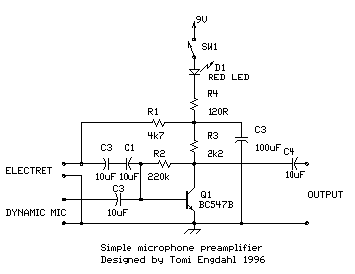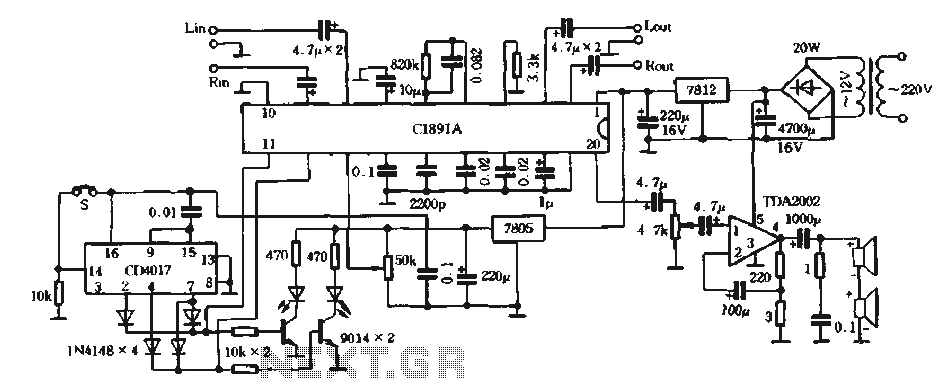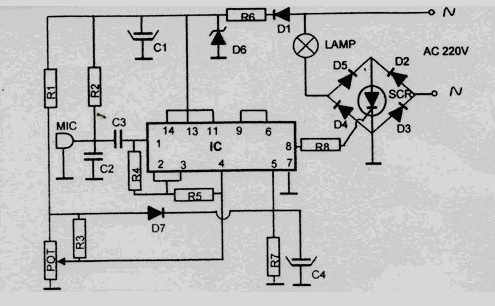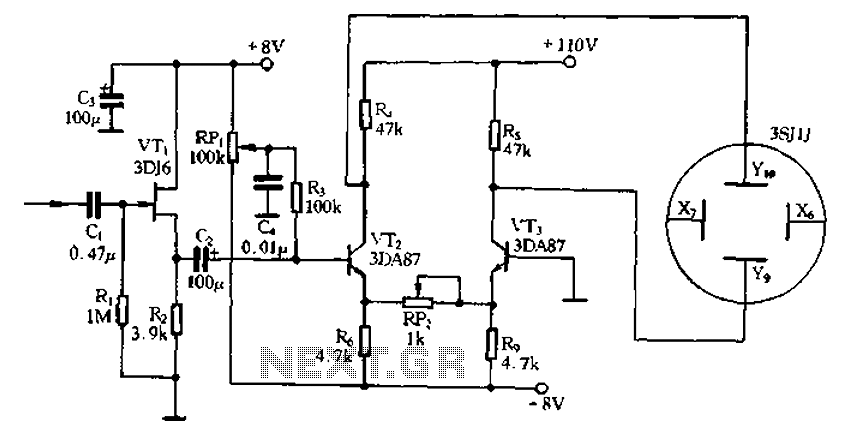
EL84 Amp Baby Huey
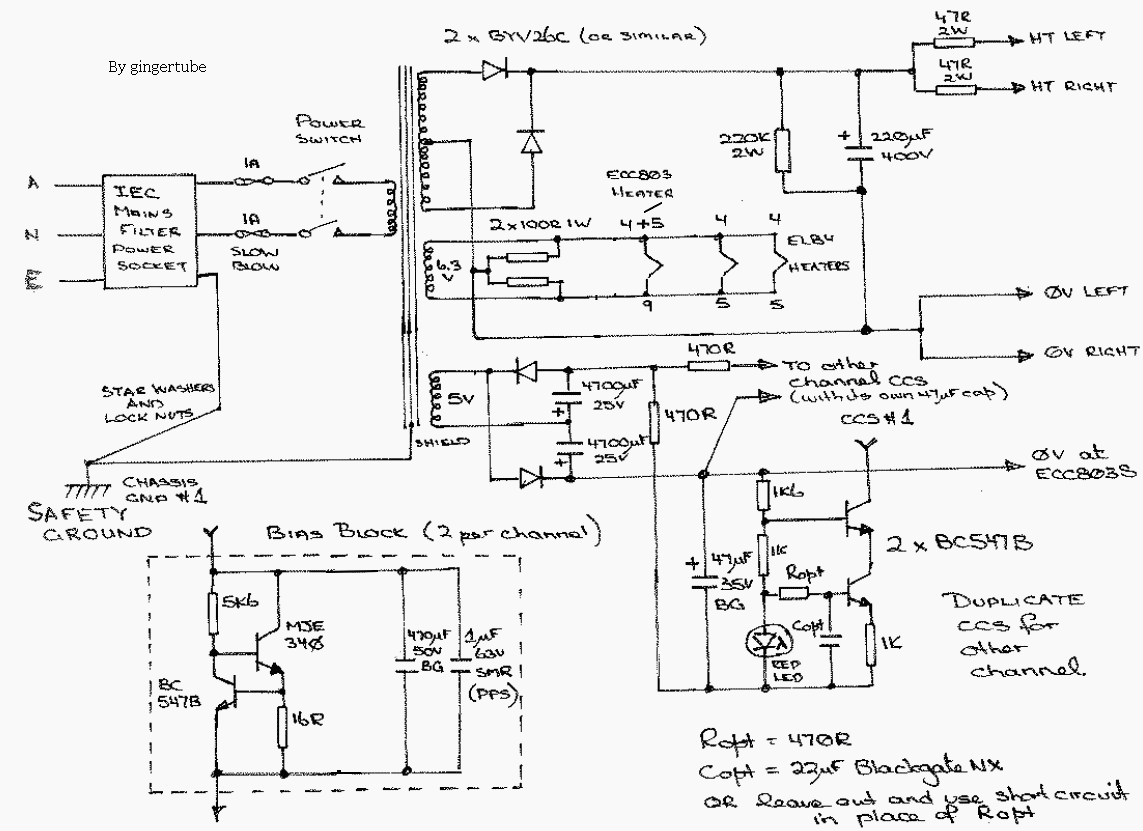
This design is based on an ECL86 amplifier configuration originally shared by Yves some time ago. It employs shunt feedback to lower the output stage's rp, thus enhancing the ability to drive the limited primary inductance found in lower-cost output transformers. Despite this limitation, the performance is satisfactory enough to justify the use of higher quality transformers. While the Hammond 1608 (with a primary impedance of 8K) is an adequate choice, a more premium transformer is recommended for optimal results. The design can operate without the Ultralinear connection; however, doing so will lead to a decline in performance. This project is considered suitable for beginners and is likely to outperform many other entry-level designs encountered in various forums. The MJE340 transistors used in the biasing circuits do not require heatsinks if mounted directly against the chassis, as they dissipate approximately half a watt; otherwise, a small heatsink may be necessary.
The ECL86 amplifier circuit is characterized by its efficient use of shunt feedback, which significantly reduces the output stage resistance, thereby enhancing performance with transformers that have limited inductance. The choice of transformer is crucial, as it directly influences the amplifier's sound quality and overall performance. The Hammond 1608 transformer, with its 8K primary impedance, provides a reasonable starting point, but for those seeking superior sound quality, investing in a higher-grade transformer is advisable.
The circuit design allows for flexibility, as it can function without the Ultralinear connection. However, this connection is often utilized in high-fidelity audio applications, as it provides a more linear response and lower distortion, which are critical for achieving high-quality audio reproduction. Users should be aware that omitting this feature may result in a noticeable decrease in sound quality.
This amplifier is particularly suitable for novice builders due to its straightforward design and the availability of components. The MJE340 transistors, which are part of the bias circuit, are designed to operate efficiently without additional cooling when mounted to the chassis, simplifying the assembly process. If the transistors are not mounted in this manner, it is prudent to use small heatsinks to ensure reliable operation without overheating.
Overall, this ECL86 amplifier design is an excellent introduction to audio amplifier construction, providing a balance of performance and accessibility for beginners while offering the potential for enhanced sound quality through careful component selection.This design is based upon an ECL86 Amp design posted by Yves quite some time ago. This design uses shunt feedback to reduce the output stage rp and thus better drive the limited primary inductance of cheaper output transformers. Regardless of that, the result is good enough that its worth using reasonable quality transformers and while the common
Hammond 1608 (Raa = 8K) will work well, it really deserves something a bit higher quality (more expensive). It can be used without the Ultralinear connection BUT performance would be degraded. I believe it is suitable as a "newbies" first project and it will certainly out-perform most of the simple "suitable for newbies" designs I have seen here and elsewhere.
The MJE340s in the bias blocks don`t need heatsinks if mounted against the chassis (they dissipate about 1/2 a watt) else a small heatsink would be advisable. 🔗 External reference
The ECL86 amplifier circuit is characterized by its efficient use of shunt feedback, which significantly reduces the output stage resistance, thereby enhancing performance with transformers that have limited inductance. The choice of transformer is crucial, as it directly influences the amplifier's sound quality and overall performance. The Hammond 1608 transformer, with its 8K primary impedance, provides a reasonable starting point, but for those seeking superior sound quality, investing in a higher-grade transformer is advisable.
The circuit design allows for flexibility, as it can function without the Ultralinear connection. However, this connection is often utilized in high-fidelity audio applications, as it provides a more linear response and lower distortion, which are critical for achieving high-quality audio reproduction. Users should be aware that omitting this feature may result in a noticeable decrease in sound quality.
This amplifier is particularly suitable for novice builders due to its straightforward design and the availability of components. The MJE340 transistors, which are part of the bias circuit, are designed to operate efficiently without additional cooling when mounted to the chassis, simplifying the assembly process. If the transistors are not mounted in this manner, it is prudent to use small heatsinks to ensure reliable operation without overheating.
Overall, this ECL86 amplifier design is an excellent introduction to audio amplifier construction, providing a balance of performance and accessibility for beginners while offering the potential for enhanced sound quality through careful component selection.This design is based upon an ECL86 Amp design posted by Yves quite some time ago. This design uses shunt feedback to reduce the output stage rp and thus better drive the limited primary inductance of cheaper output transformers. Regardless of that, the result is good enough that its worth using reasonable quality transformers and while the common
Hammond 1608 (Raa = 8K) will work well, it really deserves something a bit higher quality (more expensive). It can be used without the Ultralinear connection BUT performance would be degraded. I believe it is suitable as a "newbies" first project and it will certainly out-perform most of the simple "suitable for newbies" designs I have seen here and elsewhere.
The MJE340s in the bias blocks don`t need heatsinks if mounted against the chassis (they dissipate about 1/2 a watt) else a small heatsink would be advisable. 🔗 External reference
